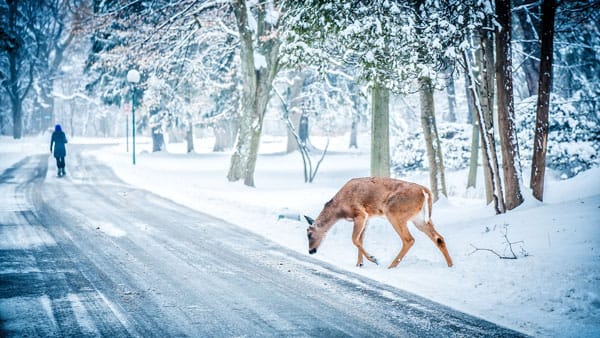Watch out for wildlife

By Daniel Williams
Residents in the 80108 ZIP code are blessed to live in a beautiful natural surrounding, but a spree of recent incidents involving collisions between motorists and wildlife is a reminder of how close we live to many of our wilder, four-legged neighbors, including coyotes, deer, elk, bears and mountain lions.
In light of the accidents taking place involving cars and animals, particularly deer, the City of Castle Pines released a statement recently, warning residents to take some extra care and attention while driving, as we are very much in the midst of an active migration zone.
Wildlife collisions
Animal-vehicle crashes are actually the third greatest cause of automobile accidents in Colorado, following speeding and inattentive driving. According to the Colorado Department of Transportation, approximately 3,300 wildlife collisions are reported each year, not counting an additional 2,000 to 4,000 that are not reported to law enforcement.
That has led to more than $1.1 billion in insurance claims across the country, with an average incident causing more than $3,000 in vehicle damage, according to the Rocky Mountain Insurance Information Association.
Our nearby stretch of I-25 between Castle Rock and Larkspur is also one of the highest-risk zones in the entire state. And these incidents are at their peak during fall and spring, as migrating animals move through our urban spaces seeking food and safety. Worse, animals tend to be on the move at both dusk and dawn, and frequently end up intersecting with our own rush-hour driving times.
“This time of year, the days are getting shorter and people are commuting to and from work at those times,” said Colorado Parks and Wildlife District Manager Cody Wigner.
Parks and Wildlife and CDOT have assembled a list of safety tips that can help drivers avoid a costly and potentially dangerous collision:
Slow down. We know that modern life suggests we can make up time by pushing the pedal to the metal, but driving quickly reduces reaction time and can compound the damage involved in an animal-auto crash. Obey speed limits, particularly in rural zones.
Stay alert. Especially while driving at dusk and dawn. These are the most active times of the day for wildlife movement, and when it is most likely to find animals crossing streets and highways.
Scan ahead. Always keep your eyes on the road, but also watch for movement alongside the highway. When driving at night, shining eyes in your headlights are a telltale sign of animal activity. Also be prepared for more than one animal, if you’ve spotted a first one approaching the road.
Obey traffic signs. Wildlife crossing signs and other warning signs are there for a reason, based on past migration routes. Take extra care when passing these areas.
For additional information, visit the Colorado Division of Parks and Wildlife at http://cpw.state.co.us/.